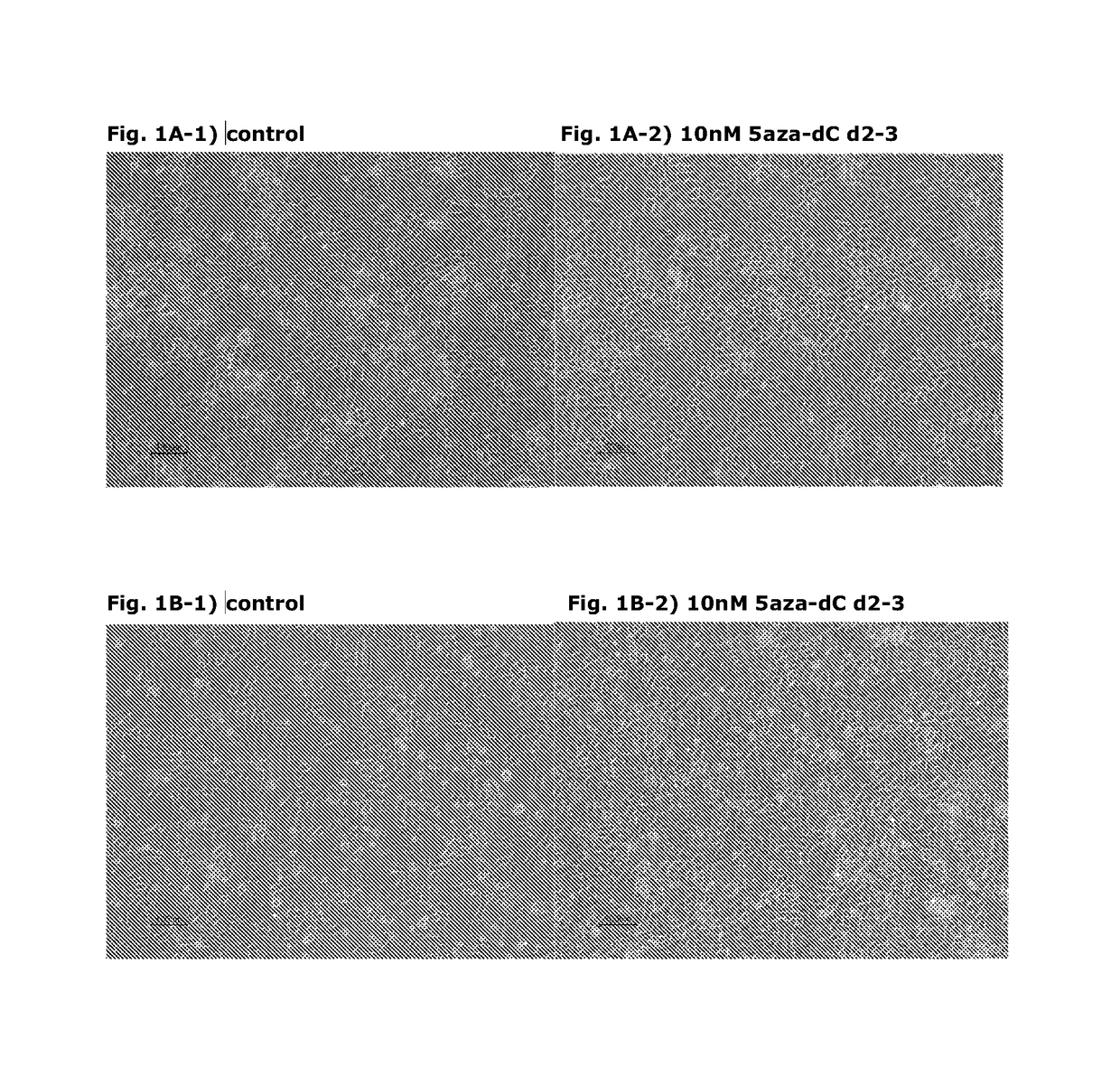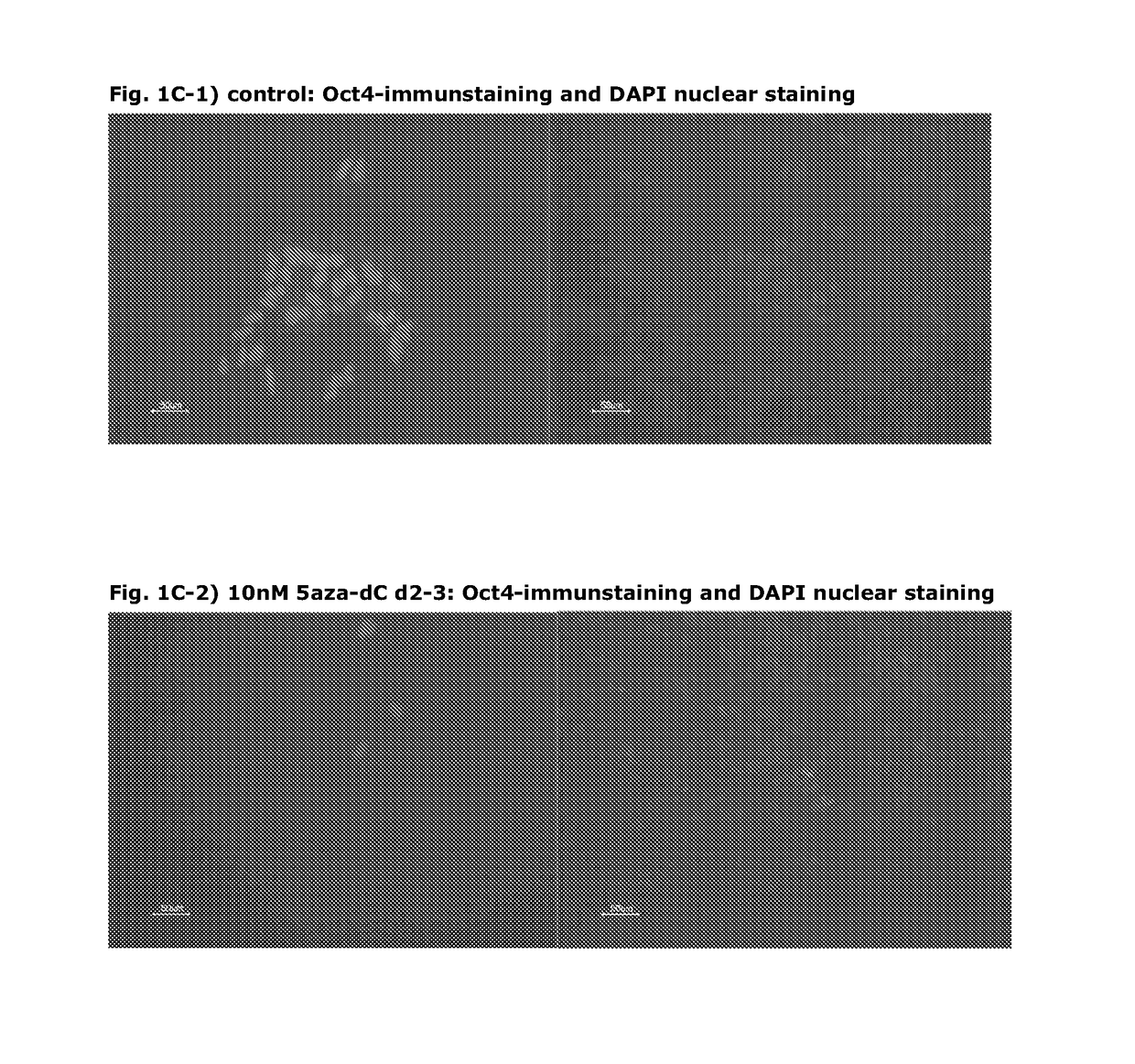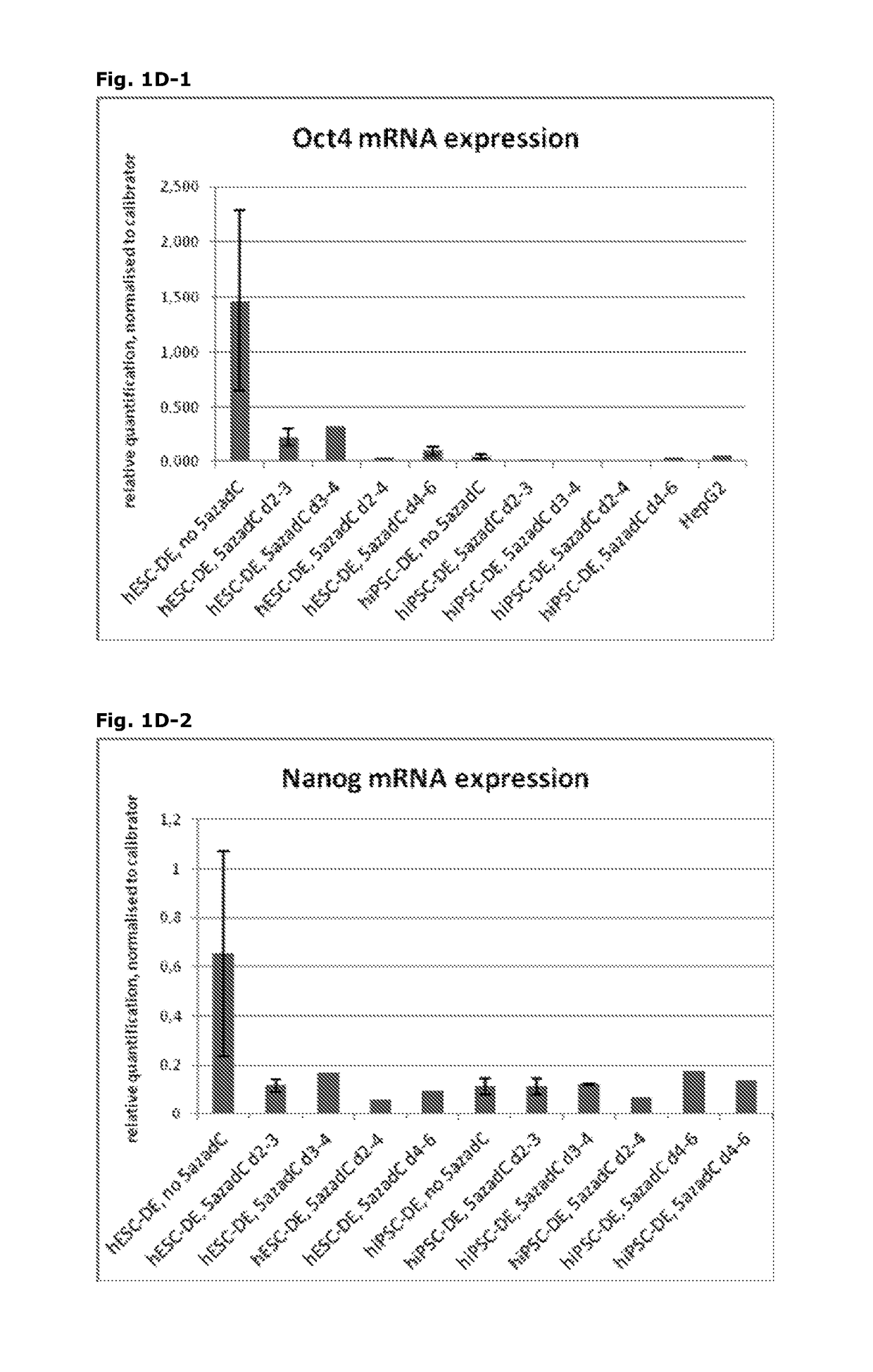Methods for producing mammalian pluripotent stem cell-derived endodermal cells
a technology of endoderm cells and stem cells, which is applied in the direction of embryonic stem cells, artificial cell constructs, non-embryonic pluripotent stem cells, etc., can solve the problems of unrecognized early endoderm development and achieve the effect of improving characteristics
- Summary
- Abstract
- Description
- Claims
- Application Information
AI Technical Summary
Benefits of technology
Problems solved by technology
Method used
Image
Examples
example 1
Maintenance of hPS Cell Types
[0121]All hPS cells (as defined above) can be used as staring material for this invention. For the examples below in particular definitive endoderm was derived in vitro from undifferentiated human embryonic stem cells (hESC) established on mEF feeder cells (Heins et al 2004) and maintained under feeder-free conditions. The cell lines used for this experiment could be, but are not limited to the hES cell lines SA167, SA181, SA461 (Cellartis A B, Göteborg, Sweden) and they can be propagated as described by Heins et al. 2004. These cell lines are listed in the NIH stem cell registry, the UK Stem Cell bank and the European hESC registry and are available on request.
[0122]Along with hPS obtained from hESC, hiPS (human induced pluripotent stem) cells have also been used for the derivation of hepatocytes for the examples of this invention.
[0123]The hiPSC line used in this invention are derived as followed: Human dermal fibroblasts (CRL2429, ATCC) were maintaine...
example 2
Differentiation of hPS Cell Types to Produce Hepatocyte-like Cells Hepatocyte-like Cells may be derived from hPS cells by employing the following Exemplary Basic Protocols A and B
[0124]Protocol A:
[0125]Undifferentiated hPS cells are dissociated and seeded directly in freshly prepared day 0-medium. The different mediums were prepared freshly and added day 0, 1, 2, 3, 4, 5, 7. The pre-treatment medium is available from Cellectis AB (Arvid Wallgrens Backe 20, 41356 Gothenburg, Sweden).
[0126]Day 0
[0127]Pre-treatment medium
[0128]3 μM CHIR99021
[0129]5 μM ROCK inhibitor
[0130]Day 1
[0131]Pre-treatment medium
[0132]3 μM CHIR99021
[0133]Day 2
[0134]RPMI 1640 (+0.1% PEST +1% Glutamax)
[0135]1×B27
[0136]50 ng / ml Activin A
[0137]3 μM CHIR99021
[0138]5 μM LY294002
[0139]Day 3
[0140]RPMI 1640 (+0.1% PEST +1% Glutamax)
[0141]1×B27
[0142]50 ng / ml Activin A
[0143]5 μM LY294002
[0144]Day 4-7
[0145]RPMI 1640 (+0.1% PEST+1% Glutamax)
[0146]1×B27
[0147]50 ng / ml Activin A
[0148]On day 7 the cells are passaged. The cells ar...
example 3
Validation of Improved Definitive Endoderm Phenotype in hESC and Hips Cells Treated with DNA Demethylation
[0171]Procedure:
[0172]Following the basic protocol A (both for hESC- and hiPSC-derived definitive endoderm), cells were treated with 10 nM 5-aza-2-deoxycytidine at different time points and for different durations during the pre-endodermal phase, e.g. on day 2-3, 2-4, 3-4 and 4-6 of the protocol (hESC-DE: no 5azadC n=4, 5azadC d2-3 n=4, d3-4 n=1, d2-4 n=1, d4-6 n=1; hiPSC-DE: no 5azadC n=5, 5azadC d2-3 n=5, d3-4 n=2, d2-4 n=1, d4-6 n=1; with n being the number of individual experiments).
[0173]For analysis of mRNA expression, hESC- and hiPSC-derived DE-cells were harvested on day 7 of the protocol and gene expression was analysed using qRT-PCR, normalised to the house-keeping gene CREBBP, and the results presented as relative quantification normalised to a calibrator.
[0174]Results:
[0175]FIG. 1A: DE derived from hESC treated with 10nM 5-aza-2-deoxycytidine on day 2-3 (FIG. 1A2) is...
PUM
| Property | Measurement | Unit |
|---|---|---|
| concentration | aaaaa | aaaaa |
| concentration | aaaaa | aaaaa |
| concentration | aaaaa | aaaaa |
Abstract
Description
Claims
Application Information
 Login to View More
Login to View More - R&D Engineer
- R&D Manager
- IP Professional
- Industry Leading Data Capabilities
- Powerful AI technology
- Patent DNA Extraction
Browse by: Latest US Patents, China's latest patents, Technical Efficacy Thesaurus, Application Domain, Technology Topic, Popular Technical Reports.
© 2024 PatSnap. All rights reserved.Legal|Privacy policy|Modern Slavery Act Transparency Statement|Sitemap|About US| Contact US: help@patsnap.com










